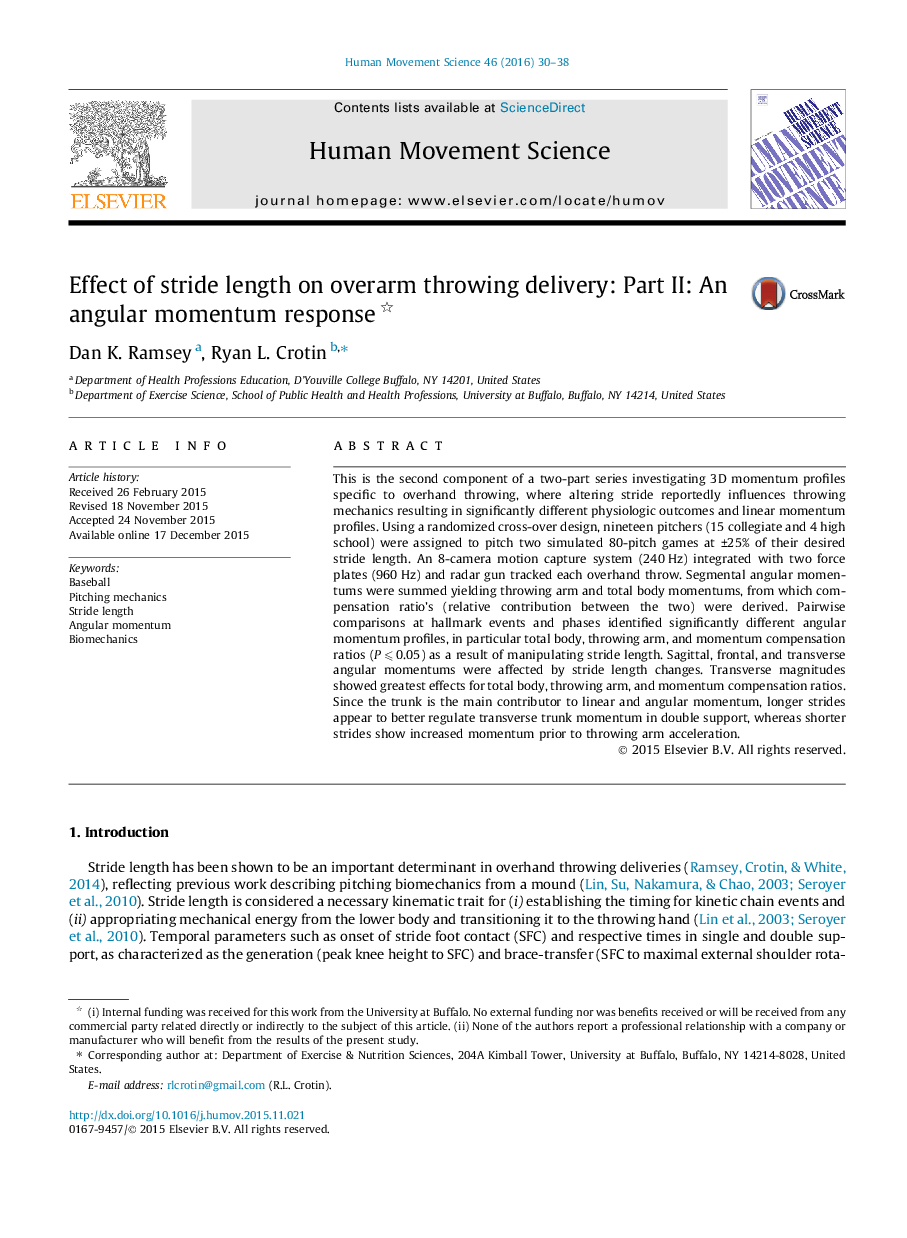| Article ID | Journal | Published Year | Pages | File Type |
|---|---|---|---|---|
| 928203 | Human Movement Science | 2016 | 9 Pages |
•Proximal segment momentum affected relative throwing arm contributions.•Shorter strides adapted transverse plane momentum due to lower leading-axis momentum.•Longer strides may better regulate transverse trunk momentum during double support.
This is the second component of a two-part series investigating 3D momentum profiles specific to overhand throwing, where altering stride reportedly influences throwing mechanics resulting in significantly different physiologic outcomes and linear momentum profiles. Using a randomized cross-over design, nineteen pitchers (15 collegiate and 4 high school) were assigned to pitch two simulated 80-pitch games at ±25% of their desired stride length. An 8-camera motion capture system (240 Hz) integrated with two force plates (960 Hz) and radar gun tracked each overhand throw. Segmental angular momentums were summed yielding throwing arm and total body momentums, from which compensation ratio’s (relative contribution between the two) were derived. Pairwise comparisons at hallmark events and phases identified significantly different angular momentum profiles, in particular total body, throwing arm, and momentum compensation ratios (P ⩽ 0.05) as a result of manipulating stride length. Sagittal, frontal, and transverse angular momentums were affected by stride length changes. Transverse magnitudes showed greatest effects for total body, throwing arm, and momentum compensation ratios. Since the trunk is the main contributor to linear and angular momentum, longer strides appear to better regulate transverse trunk momentum in double support, whereas shorter strides show increased momentum prior to throwing arm acceleration.
